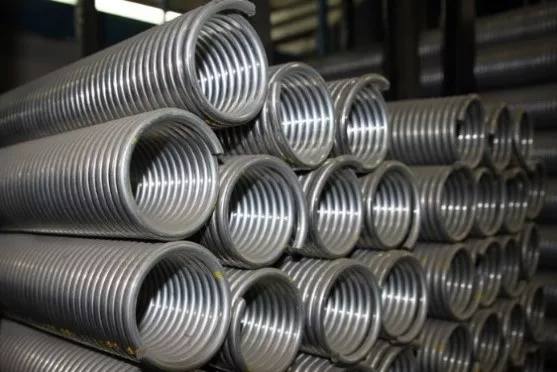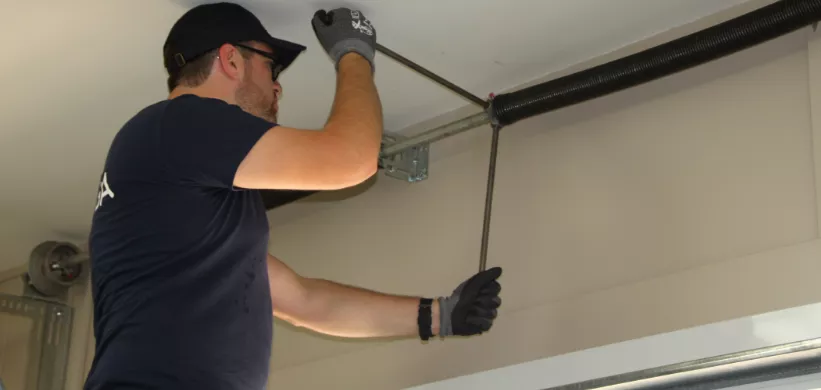Have you ever wondered what a torsion spring is? The chances are good that this is not something that has crossed your mind very often, or at all. However, these springs play a much larger role in your life than you might have imagined. If you have a garage door system in your home, and one of these springs breaks, you can be sure that torsion springs will be on your mind. They are responsible for providing counterbalancing for your garage door, which is what will allow it to open by hand easily. It is one of the main parts of the garage door system, and having some basic knowledge of it is a good idea.

Why Are Torsion Springs Used?
With sectional overhead garage doors, there are two types of springs in use. First, there are extension springs, which appear over horizontal tracks. The torsion springs sit over the head of the door. You will find that the torsion springs tend to be the ones that are used most often today. They have some excellent advantages over the extension springs.
First, they tend to operate very smoothly. With extension spring systems, if the door isn’t properly adjusted, it will cause quite a bit of shaking. You do not often see that sort of issue with the torsion springs. Besides, the torsion springs tend to be safer since they are in a shaft. If the spring breaks, the shaft will contain it. That’s not the case with extension springs, which means that if they break and are not secured with safety cables, they can cause quite a bit of damage.
Another benefit of the torsion springs is the sound. They are quieter because they are not attached to tracks. Having a garage door that is a bit quieter is something you will grow to appreciate.
How Does the Torsion Spring Work?
The springs are shaped like coils, and they work through twisting or tension. They can store mechanical energy, and they can use that energy to help lift the garage door either manually or with the aid of an electric door opener. It is far more than just a counterweight system.
One of the other things that you will note when you start to look closer at the torsion spring is that it is just a part of a more extensive system that all works together. The spring goes into a shaft, which is held in place thanks to the central plate on the wall. The cable is attached to the bottom of the door with a bracket. All of the elements of the system work together – bottom bracket + lifting cable + drum + shaft + spring. When the door is open, the spring is relaxed. When closed, the door’s energy transfers to the spring.
Have you wondered just how much your door might weigh? The answer will depend on the size of the door. Let’s get a closer look.
When you have a 1 ¾” thick steel door, which also has polyurethane foam insulation, it equates to about 2 lb. per square foot. If the door also has windows, the weight naturally goes up. If you have a door that is 9’ x 7’, common for a single door, it could weigh between 150 lb. to 160 lb. (68 kg to 73 kg). Double doors that are 16’ x 7’ could be between 280 lb. and 295 lb. (127 kg to 135 kg).
When you have a 2” thick steel door that does not have insulation, the weight is about 1 ½ lb. per square foot. The weight for a 9’ x 7’ door would be 125 lb. to 130 lb. (57 kg to 59 kg). The weight would be 225 lb. to 235 lb. (102 kg to 107 kg) for a 16’ x 7’ door.
What Else You Need to Know
Many common questions tend to arise when it comes to torsion springs. Let’s take a look at some of those questions and their answers to give you a better grasp of these types of springs.
Is the location of the spring always going to be on the left side of the garage door when viewed from inside? No, you will find that they could be installed on either side depending on the make and model. Keep in mind that in cases where there is less than 12” of headroom above the garage door, the spring will be mounted in the rear. Most of the time single doors that are 9’ x 7’ will have just a single spring, while double doors that are 16’ x 7’ will usually have two springs.
People often wonder how often they have to replace springs, as well. Most of the time, it averages out to about every seven years. That is assuming there is moderate use of the garage door for about two to three cycles (opening and closing) of the garage door each day. Many springs rate for 10,000 of these cycles, but some manufacturers have springs that can reach 25,000 cycles.
If you want to increase the life of the door, you will want to consider regular lubricating for all of the metal parts of the door that come into contact with one another. Doing so includes the spring, hinges, and the metal rollers. Most of the springs are protected against rust thanks to galvanizing. They will be 35% to 40% galvanized. Of course, if you live in an area where the garage gets extremely humid, you might want to opt for fully galvanized springs instead.
Is Your Torsion Spring Working Properly?
Are you worried that the spring might not be working right? You can check this quickly. Disengage the electric garage door opener if you have one and then try to lift the door manually. If the door feels as though it weighs more than 10lb or 5 kg, it indicates that there is likely a problem with your torsion spring.
However, this doesn’t mean that you will want to try to change the spring on your own. It is an area you need to leave to the professionals. Make sure that you get in touch. If you live in or around Grand Rapids or Holland, you will want to contact us at 616‑453‑0164. We understand the entire garage door system from top to bottom, and we can handle and repair these parts. If you want, we can also send a quotation by email.









Add new comment